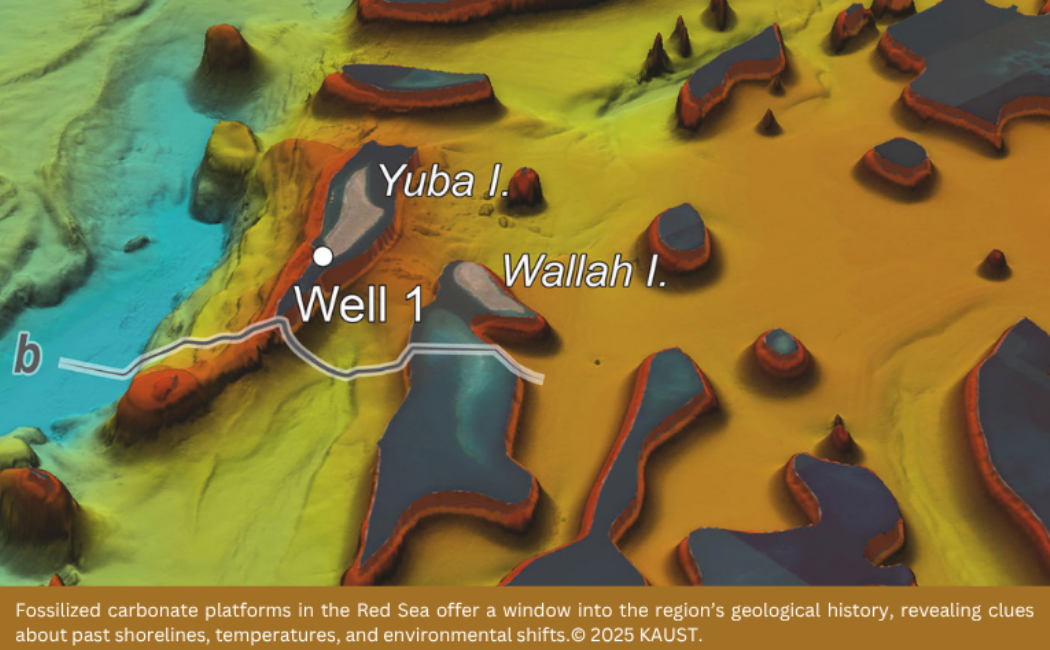Understanding how carbonate platforms have developed provides insights into what the future may hold for the valuable reef ecosystems they sustain.
Carbonate reef platforms are large sedimentary deposits built up from the remains of calcareous marine organisms, including corals and shell-dwelling creatures, and microbes that precipitate carbonate through their metabolic processes. The Red Sea has some of the world’s most spectacular fossilized carbonate platforms, offering scientists a unique opportunity to study the evolution of these structures in the context of a young ocean.
Now, researchers at KAUST have traced the development of carbonate platforms over the last 23 million years across the Northeastern Red Sea region.
“Carbonate platforms are indicators of the location of past shorelines, as well as past temperatures and salinity. Their initiation or demise provides a record of major geological or environmental events,” says Tihana Pensa, who worked on the project with KAUST colleagues, including Guillaume Baby, under the supervision of Abdulkader Afifi. “By studying the history of platform formations, we can learn how marine ecosystems reacted to past environmental changes and what this may mean for their future.”
The Red Sea is a globally important region for carbonate platforms, hosting several “morphotypes” from offshore banks to platforms that have formed on salt domes. While previous studies focused on individual outcrop sites, the team wanted to understand platform development in the wider geological context of the entire Red Sea basin.
The team used surface and subsurface survey data, together with satellite imagery, to examine the evolution of four carbonate platforms onshore and one offshore in the Duba Basin. Fossilized shells of certain marine species, along with the strontium isotope composition of their shells, helped date the different platforms.
“The platforms developed in stages, shaped by the tectonic evolution of the Red Sea and changes to global sea-levels and salinity,” says Guillaume Baby. “Twenty-three million years ago, the Red Sea was a narrow rift basin composed of tilted fault blocks. The oldest carbonates colonized only the shallowest parts of these blocks, where sunlight could support their growth.”
